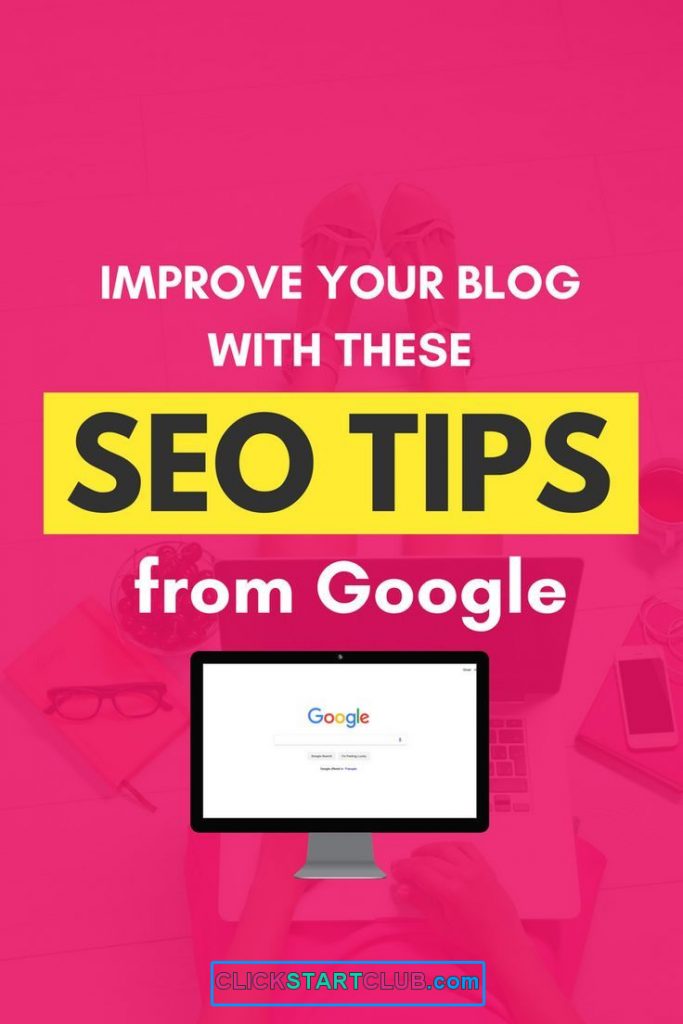I was clueless about SEO (search engine optimization) until a few months ago when I joined Bloggers Tell All and learned the power of SEMrush. I regret ignoring it for so long, but I’m not looking back. I’m looking ahead and making improvements. I know SEO is a long game so I can be patient and hope that the improvements I’m making now will pay off down the road.
One excellent resource about SEO comes from Google themselves. I’ve read through it and made some notes of important points and wanted to share what I learned with you!
What You Need to Know About SEO from Google
SEO is about making small improvements to your site. You don’t do it all in one day and as I’ve learned it’s little by little, day by day. I do something SEO related every single day whether it’s making a small change to one of my low hanging fruit posts or making sure a new post I’m publishing is fully optimized. Little changes are what is important and can make a big impact.
You should optimize your site to serve your user’s needs. One of those users is search engines. Think about your readers AND search engines when writing posts and not just one or the other. You need to consider both end users. I can tell when someone writes a post strictly for search engines and it reads funny. Too many keywords and repetition. On the other hand, my old way of writing was strictly for humans. I didn’t think about keywords or SEO at all. My mistake.
SEO is about helping search engines understand and present content. Search engines read your posts and share the best ones in the top spots. Make it easy for search engines to understand your content.
To determine if your site is in the Google Index, do a site search like this: site:yoursite.com
To help Google find your content, make sure you submit a sitemap.
Not all your pages should be crawled like internal search results. Use your robots.txt file found in the root directory of your host to block non-sensitive pages. Consider using noindex instead of robots.txt to block unimportant posts or pages. Make sure to allow access to Javascript, CSS and images so Google can understand your content.
You can make sure that Google can crawl your JavaScript, CSS and image files by using the Fetch as Google Tool. It will show you how Google sees your site and allows you to fix any indexing issues.
You can also check and test your robots.txt.
For titling your post, use unique titles that describe the content. Keep it brief, but descriptive. Avoid keyword stuffing.
If you use the Yoast plugin, make sure to fill out the description meta tag to describe the content. It may be used in the snippet for search results. Google recommends not being generic, not only filling with keywords and that it’s unique.
Heading tags are to be used like you were writing an essay to highlight important points and subpoints. Use them for structure for your post and not styling. Make sure they aren’t used excessively and that they aren’t too long.
Use a recipe plugin that adds structured data markup for your recipes. Use this tool to check for any errors. You can also get a Structured Data Report. This Search Gallery shows how structured data is used in search results.
Google recommends that sites are https so if you haven’t done that yet, do it asap.
Consider creating a custom 404 page.
When you are making urls, use relevant words, but don’t be excessive with keywords. Don’t use numbers.
Write for the reader and give them what they want. This includes an easy to follow post that is well written with paragraphs and heads. Make sure your content is fresh and unique. Avoid using blocks of text with spelling errors.
It’s also important to create good anchor text for your internal and external links. Don’t use “click here” or generic text like “post” or “page”. Don’t use url as the text. Keep them short with only a few words or a phrase. Make sure your links are distinguishable from your other text.
Internal links will help readers navigate your site. Use them.
Think before you link! Be careful of who you are linking to because you are passing on some of your site’s reputation with every link.
Ensure that links in your comments are being nofollowed.
Use the alt text to describe your image as this is what is used in Google Image Search. Keep your alt text and file names short, but descriptive. Don’t use names like image1 and don’t keyword stuff. They recommend not using entire sentences in your alt text.
Make your site mobile friendly. So important! Find out using this mobile friendly test.
Don’t use link schemes! Don’t purchase links and don’t spam others to promote your links.
Make sure you are using Google Search Console. It’s a gold mine of information about your site. It can tell you:
- See which parts of a site Googlebot had problems crawling
- Test and submit sitemaps
- Analyze or generate robots.txt files
- Remove URLs already crawled by Googlebot
- Specify your preferred domain
- Identify issues with title and description meta tags
- Understand the top searches used to reach a site
- Get a glimpse at how Googlebot sees pages
- Receive notifications of quality guidelines violations and request a site reconsideration
I hope these tips help you like they’ve helped me to better understand SEO from Google’s perspective.



